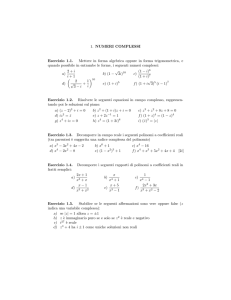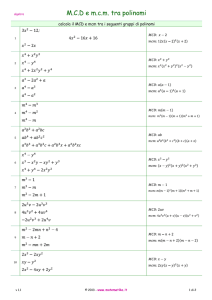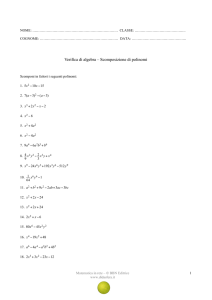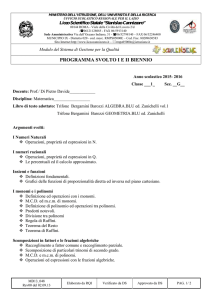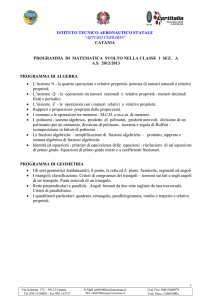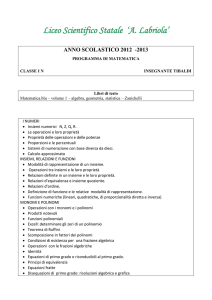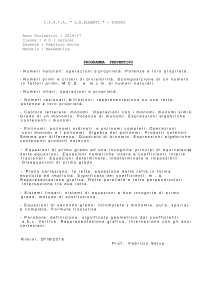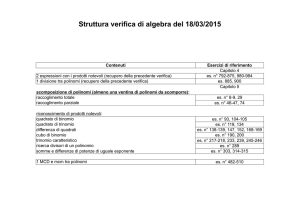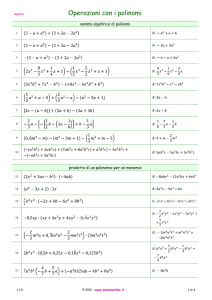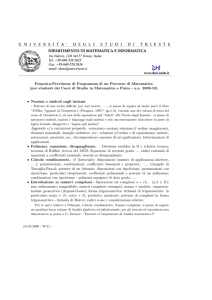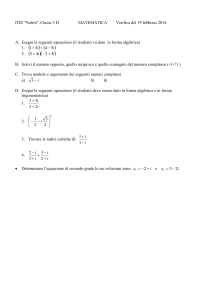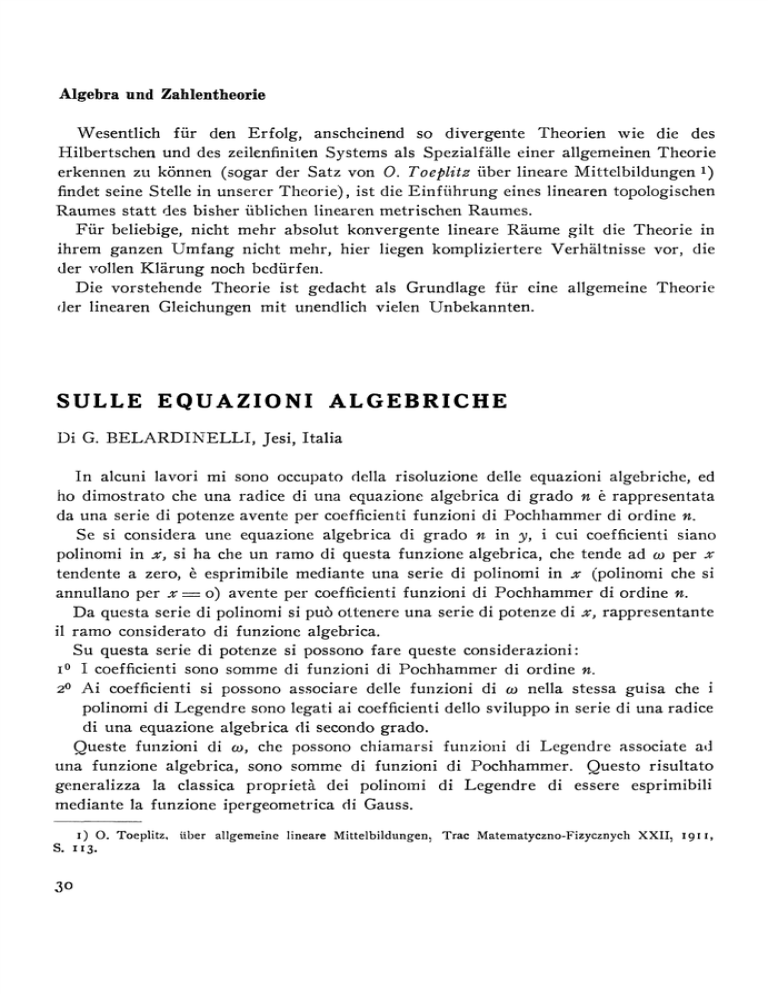
Algebra und Zahlentheorie
Wesentlich für den Erfolg, anscheinend so divergente Theorien wie die des
Hilbertschen und des zeilenfiniten Systems als Spezialfälle einer allgemeinen Theorie
erkennen zu können (sogar der Satz von 0. Toeplitz über lineare Mittelbildungen *)
findet seine Stelle in unserer Theorie), ist die Einführung eines linearen topologischen
Raumes statt des bisher üblichen linearen metrischen Raumes.
Für beliebige, nicht mehr absolut konvergente lineare Räume gilt die Theorie in
ihrem ganzen Umfang nicht mehr, hier liegen kompliziertere Verhältnisse vor, die
der vollen Klärung noch bedürfen.
Die vorstehende Theorie ist gedacht als Grundlage für eine allgemeine Theorie
der linearen Gleichungen mit unendlich vielen Unbekannten.
SULLE EQUAZIONI ALGEBRICHE
Di G. BELARDINELLI, Jesi, Italia
In alcuni lavori mi sono occupato della risoluzione delle equazioni algebriche, ed
ho dimostrato che una radice di una equazione algebrica di grado n è rappresentata
da una serie di potenze avente per coefficienti funzioni di Pochhammer di ordine n.
Se si considera une equazione algebrica di grado n in y, i cui coefficienti siano
polinomi in x, si ha che un ramo di questa funzione algebrica, che tende ad œ per x
tendente a zero, è esprimibile mediante una serie di polinomi in x (polinomi che si
annullano per x = o) avente per coefficienti funzioni di Pochhammer di ordine n.
Da questa serie di polinomi si può ottenere una serie di potenze di x, rappresentante
il ramo considerato di funzione algebrica.
Su questa serie di potenze si possono fare queste considerazioni:
i° I coefficienti sono somme di funzioni di Pochhammer di ordine n.
2° Ai coefficienti si possono associare delle funzioni di œ nella stessa guisa che i
polinomi di Legendre sono legati ai coefficienti dello sviluppo in serie di una radice
di una equazione algebrica di secondo grado.
Queste funzioni di co, che possono chiamarsi funzioni di Legendre associate ad
una funzione algebrica, sono somme di funzioni di Pochhammer. Questo risultato
generalizza la classica proprietà dei polinomi di Legendre di essere esprimibili
mediante la funzione ipergeometrica di Gauss.
i) O. Toeplitz, über allgemeine lineare Mittelbildungen, Trac Matematyczno-Fizycznych XXII, 1911,
S. 113.
30
Algebra und Zahlentheorie
ON LINEAR INEQUALITIES
By L. L. DINES, Saskatoon, Canada
The purpose of this communication is to describe an undertaking in which the
author has been engaged in collaboration with N. H. McCoy. Since the first attempt
at a systematic study of linear inequalities by Fourier in 1824, a number of authors
have given attention to the subject. In our bibliography we list no less than 37 titles
under which the subject is treated more or less directly. Some of these contributions
have appeared in unexpected places, and some of the contributors, including the
present author, have at times worked in ignorance of important earlier contributions.
Our present attempt has therefore been chiefly to make a somewhat comprehensive
summary of the various developments in this field. However we have not hesitated
to introduce new notions and new proofs where it was felt that improvement was
possible, and a number of new results appear for the first time.
The general problem is relative to a system of inequalities of the form
«
2J^jX/^0
{i=i,
2, ..., ;//),
and to other systems obtained from this by alteration of the relation ==r, and by
generalization and extension to include various types of functional inequalities. The
results obtained have to do with: (1) conditions for the existence of a solution,
(2) methods of determining solutions, (3) expression of the general solution in
terms of certain fundamental solutions, and (4) relations between a given system of
inequalities and the associated system of linear equations, which for the system displayed above would be
m
2Jai/yi=o
0 = 1, 2, ..., n).
The last of these four types of results is intimately connected with the problem of
the positive solutions of linear equations.
NOMBRES PREMIERS ET COMPOSÉS
Par A. GÉRARDIN, Nancy
L'étude des nombres premiers et de la factorisation a attiré des milliers de mathématiciens, depuis les temps connus.
J'ai étudié ces sujets pendant plus de 25 ans, et j'ai publié de nombreuses méthodes
dans la presse scientifique.
3*

